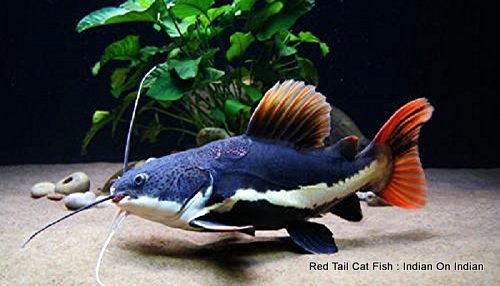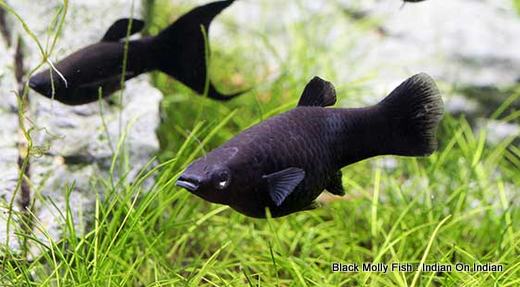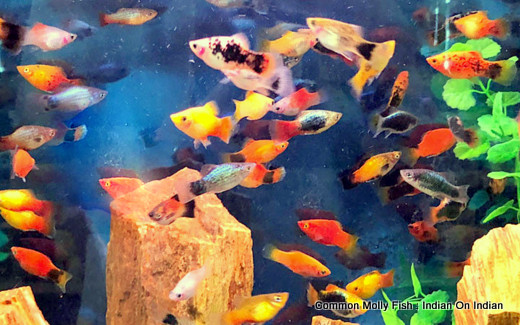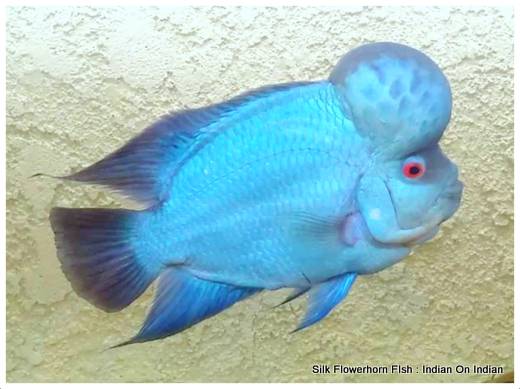 In previous four Posts on Goldfishes and Their Breeds”, We have talked About 12 varieties of Goldfishes, Now in this article, we are going to introduce 2 more Varieties of goldfishes with you.We will also tell you about their textures, diet, activities, and specializations. So let’s start trying to explore the beautiful world of pets once again from the following list:-
In previous four Posts on Goldfishes and Their Breeds”, We have talked About 12 varieties of Goldfishes, Now in this article, we are going to introduce 2 more Varieties of goldfishes with you.We will also tell you about their textures, diet, activities, and specializations. So let’s start trying to explore the beautiful world of pets once again from the following list:-
Goldfishes and Their Breeds:-
- The feeder or The Common Goldfish.
- The Black Moore Goldfish.
- Bubble Eye Goldfish.
- Celestial Eye Goldfish.
- Comet GoldFish.
- FanTail Goldfish.
- Lion Head Goldfish.
- Oranda Goldfish.
- Pearl Scale Goldfish.
- Pompom Goldfish
- Ryukin Goldfish
- Shubunkin Goldfish
- Telescope Goldfish
- Ranchu Goldfish
- Panda Moor Goldfish
- Veil Tail Goldfish
- Butterfly tail Goldfish
- Meteor Goldfish
- Lionchu Goldfish
- Egg Fish
- Shukin Goldfish
- Curled gill Gold Fish
- Tamasaba Goldfish
- Tosakin Goldfish
- White Telescope Goldfish
Now in this post, we are going to introduce 2 more Varieties of goldfishes with you.We will also tell you about their textures, diet, activities, and specializations.So let’s start trying to explore the beautiful world of pets once again. Here are the 2 more varieties from the list of Goldfishes and Their Breeds.
13. Telescope Goldfish.

This is a confusing one. Yes, confusing, because I confused them with some sort of different variety of black moor. But they are different. Let us now study this fish the Telescope Goldfish in detail.
First of all, let us look into the history of the fish. The Telescope Goldfish has many names depending upon the region from which they are coming. They are called Demekin, Globe Eyed Goldfish, and Dragon Eyed Dragon Eyed Goldfish. So many names and confusion arises when you find that there are more names for interbreed variations. You know in Japan the Telescope Goldfish is still called Demekin and the Black Moor Goldfish is known as Dragon Eyed Goldfish and also as Black Demekin. Now you see why I was confused earlier when I was new to Goldfishes. But now it’s okay, I do remember a thing or two about them.
So let us now examine the Telescope Goldfish in detail. The Telescope Goldfish, as like most of the other varieties of fancy goldfish, is an egg-shaped variety of the Goldfish. As like the Black Moor they also have the protruding eyes or I must say black moor have protruding eyes like Telescope Goldfish. There is an ongoing confusion about the exact time of origin of these two breeds ( the black moor and the telescope goldfish). Most texts though state that the telescope Goldfish were developed first and the black moor goldfish is developed as a color mutation of the telescope goldfish. Some are arguing that the vice versa holds true. Let us leave it here and move ahead with our discussion.
The trademark feature of this breed of goldfish ( the telescope goldfish) is the protruding or sticking outset of eyes. This feature is common in the telescope goldfish, the black moor goldfish, and the panda moor goldfish.
Mind it, they have big eyes. They actually got their breed name the telescope goldfish because of their eyes. Their eyes are actually placed at the top of a tiny blunt cone sticking out of their heads, so to people who developed this breed these small blunt conical eye sockets appeared to be small telescopes hanging out of their skulls, hence they named it as the telescope goldfish.
This special and unique characteristic of protruding eyes is actually not visible at the early stage of their life but is developed as they mature. Typically these protruding set of eyes start to develop at the stage of six months and eventually becomes more prominent as they grow.The body of the telescope goldfish, as I have stated earlier is egg-shaped somewhat similar to the fantail goldfish.
- The main points on which you can distinguish these two breeds (telescope goldfish and fantail goldfish) of Goldfishes are
- Telescope goldfish have protruding eyes.
- Telescope goldfish are smaller in size than the fantail goldfish.
Being a little smaller than the fantail goldfishes they appear to be short and stubby which in turn leads the famous cuteness of telescopic goldfish.
The head is also similar to the black moor goldfish, wide and countering at the end giving the head a parabolic profile.
They have this general similarity with the black moor in their tails also. The tails of the telescopic goldfish are split into two parts and are slightly forked. Lengthwise their tails are not as long and flowing like as the fantail goldfish but are shorter in comparison, moderately long, that is the best-suited phrase I can use. Keeping aforementioned general discussion in mind, Telescope Goldfish can grow up to 5 inches long. This length is also condition dependent as I have mentioned in my previous articles about different breeds of goldfish. Many aquarium hobbyists have reported their specimens have far exceeded this limit.
As I have stated earlier that they are somewhat smaller than fantail goldfish but still in a well maintained and appropriately large aquarium they can easily outgrow 8 inches of body length.
Under similar conditions in large aquariums and especially in well maintained large goldfish ponds they can reach an age of 20 years or more. Don’t expect this to happen in small household aquariums; in small spaces, they have an average lifespan of 10+ years.
As the time has passed, many other sub-breeds with some different characters have been developed by the enthusiastic fancy goldfish breeders. In the present aquarium trade, you can many other types or Breeds of telescope goldfishes like
- Veil tail telescope goldfish.
- Broadtail telescope goldfish.
- Butterfly tail telescope goldfish.And some more varieties.
In due course of time, many color options have also been developed. You can easily find solid colors in their different shades of red, orange, blue, chocolate and white. Bi-colored and tri-colored versions are also common. The calico version of the tri-colored pattern is also common. In bi-colored versions, they are found in the combinations of red and white, red and black and black and white.
14. Ranchu GoldFish

The beautiful little Ranchu; Oh I adore them, such a cute fish. They are so slow to swim and sometimes they just lay still at one place in the aquarium. So much peaceful; a literally overloaded dose of cuteness and when they will start to feed on your hands; oh boy; it’s a memory to collect. Okay, enough said, let us now take a look at the Ranchu Goldfish.
As I told you earlier, they are adorable. They are also a fancy variety of the goldfish. As like other fancy varieties of Goldfish they are also egg-shaped, that is they have a short and stubby body as like an egg. Comparing with other varieties they are a bit midway rounded. Ranchu Goldfish are not as rounded as like Pearl Scale Goldfish, but not as slender as that of Oranda Goldfish.
Ranchu goldfish is one of the earliest developed variety of the fancy goldfishes. Though they are originated in China most of the development that leads to modern day Ranchu is done in Japan.
Comparing with other varieties, Ranchu Goldfish have shorter fins. Talking about the fins, Ranchu Goldfish don’t have the back fin which is known as dorsal fin in the biological term. Ranchu Goldfish have broader back, they appear to be wider than most fancy Goldfish varieties. Just behind the head, the back starts to take a smooth curve that is uniform right up to their tail. This emphasis their egg-shaped body, even more, giving them a highly curved and countered shape, especially just before the beginning of the tail. Speaking of tails, Ranchu Goldfish have unique tails. Their tail fins spread sideways. This is a unique trait of the Ranchu Goldfish giving their tails an appearance of growing in the horizontal plane. Their ( Ranchu Goldfish) tail is also not evenly split into two halves but many times you will find two, three or even four lobes in their tail.
Looking at their size, they can grow up to five inches. In properly maintained aquariums that have enough space for every fish, they can grow fairly larger than this size. Similarly, they can live more than a decade and in properly maintained a large aquarium with a lower level of competition they can live fairly long.
Oh! I forgot to talk about their most distinguished feature, their head. They have similar raspberry kind of fleshy growth on their head as in the case of lion head goldfish. Though this fleshy growth is absent in the eyes, mouth, and nostrils.Sometimes this fleshy growth is so enormous that this actually hinders the vision of the fish.
This cute little fish also comes in a variety of colors. They can be found in red, orange, yellow and a variety of other shades of red. Though, most commonly they are found in bicolored forms such as red and white, yellow and white, orange and white, gold and white and even calico. Complete white and complete black occur occasionally but are rather rare.
Lastly, as for rearing them, keep them in a spacious non-crowded aquarium because of obvious reasons. They are slow swimmers and lack dorsal fin so, it is rather difficult for them to swim fast and change the directions abruptly. There egg-shaped short and stubby body further increases their inability for faster movements. It’s best if you keep only Ranchu goldfish in an aquarium that too just one fish per 25 liters of water. So, just for an example if you are having a 250 liters tank then just keep 10-12 fishes in it.
Please take care of water quality also because the fleshy head growth is prone to catch infections when kept in an unclean environment.
So In Part 5 of Goldfishes and Their Breeds, We have talked About Goldfishes and 2 more common varieties of Goldfishes, we will be back with All Remaining Breeds of Goldfishes in Next Article till then Keep Visiting and Share your views and experiences with us using Comment Section, And please don’t Forget to share this post with all the pet lovers.






